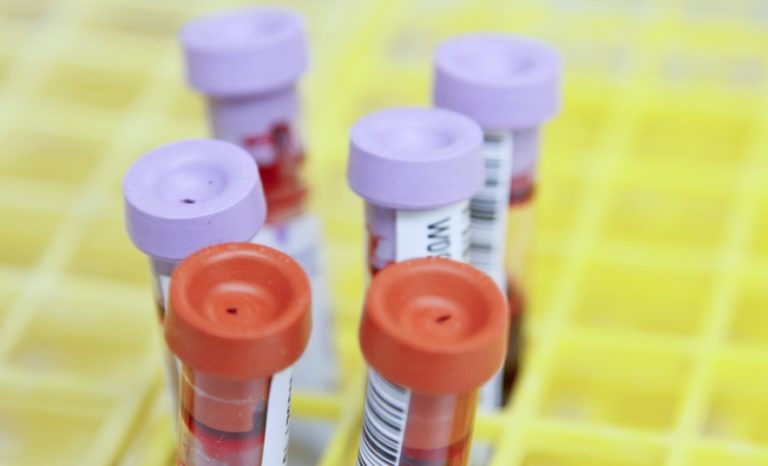August 30, 2021: “A pivotal Phase 3 trial evaluating Dupixent® (dupilumab) for the treatment of children aged 6 months to 5 years with moderate-to-severe atopic dermatitis, a chronic type 2 inflammatory disease, met its primary and all secondary endpoints.
The data show adding Dupixent to standard of care topical corticosteroids (TCS) significantly reduced overall disease severity and improved skin clearance, itch, and health-related quality of life measures at 16 weeks compared to TCS alone.
Dupixent is the first biologic medicine to show positive results in this young population and remains the only approved biologic medicine in patients 6 years and older with uncontrolled moderate-to-severe atopic dermatitis.
The data reinforce the well-established efficacy and safety profile of Dupixent in other age groups including a lower observed rate of skin infection in the Dupixent group compared with placebo.
During the 16-week treatment period Dupixent patients were 50% less likely to experience a skin infection (12% Dupixent, 24% placebo), and the total number of infections was nearly 70% lower (11 Dupixent, 34 placebo).
These results add to the extensive LIBERTY AD clinical program – the largest Phase 3 clinical trial program in atopic dermatitis involving approximately 3,500 children, adolescents, and adults to date.
“When a child is diagnosed with moderate-to-severe atopic dermatitis in the first few months of life, many aspects of their childhood can be significantly impacted. Parents and caregivers are challenged to find safe and effective treatment options,” said John Reed, M.D., Ph.D., Global Head of Research and Development at Sanofi.
“Currently, the standard of care for this patient population is topical steroids and other immunosuppressive medicines may be used which can damage delicate skin and, if used long-term, potentially impact growth.
Knowing that safety is of the utmost importance for physicians and parents when considering treatment options for children and infants, we are encouraged by the results of this trial showing Dupixent addressed the signs and symptoms of atopic dermatitis without broadly suppressing the immune system, demonstrating the potential it could have for these very young patients.”
Atopic dermatitis is a chronic type 2 inflammatory disease, with the age of onset younger than 5 years in 85-90% of patients.
The debilitating symptoms that infants and young children with moderate-to-severe atopic dermatitis experience often continue through adulthood and include intense, persistent itch and skin lesions that can cover much of the body, resulting in skin dryness, cracking, redness or darkening, crusting and oozing – along with increased risk of skin infections.
Moderate-to-severe atopic dermatitis significantly impacts the life of a young child, their parents and caregivers, including their mood, sleep patterns, and quality of life.
In addition, the underlying type 2 inflammation involved in atopic dermatitis can contribute to the development of other atopic diseases, like asthma, that may also appear throughout a person’s life.
“Moderate-to-severe atopic dermatitis in infants and young children is incredibly distressing for patients and their caregivers, who manage painful and persistent itch, intensive daily skincare routines such as chlorine baths and wet wraps, as well as sleepless nights for children and their families,” said George D. Yancopoulos, M.D., Ph.D., President and Chief Scientific Officer at Regeneron.
“In fact, when starting this trial, the disease covered more than half of children’s bodies and nearly a third had previously resorted to using immunosuppressive medicines.
These data show that Dupixent dramatically reduced the impact of atopic dermatitis on the lives of these young children and their families, by rapidly clearing skin, improving itch, and improving observed patient outcomes including sleep and skin pain.
In fact, Dupixent-treated patients experienced nearly 70% fewer skin infections compared to placebo patients.”
Patients received Dupixent every four weeks (200 mg or 300 mg, based on body weight) plus TCS or TCS alone (placebo).
The primary endpoints assessed the proportion of patients achieving an Investigator’s Global Assessment (IGA) score of 0 (clear) or 1 (almost clear) and 75% improvement in Eczema Area and Severity Index (EASI-75).
The pre-specified primary analysis showed that at 16 weeks patients treated with Dupixent:
- 28% achieved clear or almost-clear skin compared to 4% with placebo (p=<0.0001), the primary endpoint.
- 53% achieved 75% or greater overall disease improvement from baseline compared to 11% with placebo (p=<0.0001), the co-primary endpoint outside of the U.S.
- 70% average improvement from baseline in EASI compared to 20% improvement with placebo (p=<0.0001).
- 49% average improvement from baseline in itch compared to 2% improvement in placebo (p<0.0001).
- Significantly improved measures of observed patient outcomes (including sleep, skin pain and health-related quality of life), as well as caregiver-reported health-related quality of life.
The trial demonstrated similar safety results to the known safety profile of Dupixent in atopic dermatitis.
For the 16-week treatment period, overall rates of adverse events (AEs) were 64% for Dupixent and 74% for placebo.
Most common AEs and AEs of special interest included nasopharyngitis (8% Dupixent, 9% placebo), upper respiratory tract infection (6% Dupixent, 8% placebo) and conjunctivitis (5% Dupixent, 0% placebo), herpes viral infections (6% Dupixent, 5% placebo) and injection site reactions (2% Dupixent, 3% placebo).
Dupixent is a fully human monoclonal antibody that inhibits the signaling of the interleukin-4 (IL-4) and interleukin-13 (IL-13) pathways.
It is not an immunosuppressant and does not require lab monitoring.
IL-4 and IL-13 are key and central drivers of the type 2 inflammation that plays a major role in atopic dermatitis, asthma, and chronic rhinosinusitis (CRSwNP).
Detailed results from this trial will be presented at a future medical meeting, and data will be submitted to regulatory authorities.
In 2016, the U.S. Food and Drug Administration (FDA) granted Breakthrough Therapy Designation for Dupixent for the treatment of severe atopic dermatitis (in children aged 6 months to 11 years of age).
The use of Dupixent in children younger than 6 years of age with moderate-to-severe atopic dermatitis is currently under clinical investigation and its safety and efficacy have not been fully evaluated by any regulatory authority.
About the Dupixent Trial
LIBERTY AD PRESCHOOL is a two-part Phase 2/3 trial.
The Phase 3 randomized, double-blind, placebo-controlled trial (Part B) evaluated the efficacy and safety of Dupixent added to standard-of-care low-potency TCS compared to low-potency TCS alone (placebo) in 162 children aged 6 months to 5 years with uncontrolled moderate-to-severe atopic dermatitis.
The primary endpoints assessed the proportion of patients achieving an IGA score of 0 (clear) or 1 (almost clear) and 75% improvement in EASI-75 at 16 weeks. EASI measures extent and severity of the disease.
It was assessed using a 0-10 numerical rating scale. Patients treated with Dupixent received either 200 mg (for children weighing ≥5 to <15 kg) or 300 mg (for children weighing ≥15 to <30 kg) every four weeks.
In total, there were 162 patients in the trial, the average age was 3.8 years and 61% were male. Approximately 12% of patients were Latino/Hispanic and 19% were Black/African American.
On average, patients entered the trial with atopic dermatitis covering 58% of their body and 29% had previously used systemic immunosuppressants.
Further, 81% of these patients had at least one concurrent type 2 inflammatory disease.
Part B of the Phase 3 trial was informed by Part A, an open-label, single-ascending-dose, sequential cohort Phase 2 trial designed to assess the pharmacokinetics and safety of Dupixent in children aged 6 months to 5 years with uncontrolled severe atopic dermatitis.
Children who completed Part A or Part B of the trial were eligible to enroll in an open-label extension trial to assess the safety and efficacy of long-term treatment with Dupixent in this age group.”
https://www.sanofi.com/en/media-room/press-releases/2021/2021-08-30-07-00-00-2288011#









